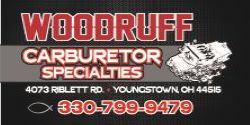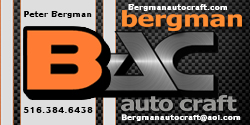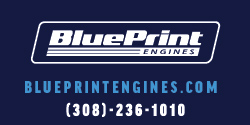- Local time
- 6:19 AM
- Joined
- Mar 28, 2014
- Messages
- 35,570
- Reaction score
- 58,922
- Location
- South Louisiana
My not being a builder and mostly street driving my Roadrunner vs mostly or exclusively racing it, the topic of 2618 vs 4032 aluminum alloy (for pistons) came to my attention. My builder has ordered the rotating assembly for my 572 and he mentioned that the Diamond pistons (4.50 bore) were 2618 alloy and that is best for nitrous. I did a search (as I did for the alloy Bill Mitchell uses) just to learn more about the characteristics of it. I came across this article by JE that compares the composition of both alloys and how that affects the real world application in a build. JE uses both alloys.
I guess my main concern or question is for my application, if it turns out that I get to fulfill my desire to do some "Power Tour" or "Drag Week" type of events, or some multi-state cruising to select locations, and my track use is a smaller % of how I use my Roadrunner, and keeping in mind my only "guaranteed" event that I do on a yearly basis is the week of Cruisin the Coast, and that although I want to be able to add up to a 300HP shot of nitrous I may never get there, until I can "manage" the power it puts out as is.
So I'm going to lean on the experience of the forum as a point of reference, and ask for your opinions.
I also know that I may be over-analyzing this, but it keeps me motivated and widens my knowledge base on what is a once in my lifetime big dollar build that I have ONE shot at "getting right", so thanks in advance!
From the article:
"4032 alloy...This alloy is created with a high silicon content – a full 12 percent. The addition of silicon greatly reduces aluminum’s expansion rate, which means the piston can run with tighter cold clearances and makes for much quieter piston operation when the engine is cold...a piston with tight clearances is extremely quiet, making it an excellent choice for a street engine. This additional silicon content also improves this alloy’s durability, again making it a great street engine choice when subjected to thousands of low-load road miles. Besides the typical wear you might see along the piston skirts, the most critical position for ultimate performance is actually in the ring grooves. One major advantage to 4032 is its additional wear resistance, which will maintain the proper ring groove clearance and means a better seal over more miles travelled."
Now I have hardly driven my Roadrunner over the last year, but I certainly want that to be the exception, and I hope to be behind the wheel a lot more this year, and in the future, but that's still going to be mostly local cruises, and may be an hour or two to as little as 20-45 minutes one way.
Again, from the article:
"The main difference with a 2618 alloy, as represented with the JE race piston line, is its very low silicon content. This makes the 2618 piston much more malleable and offers advantages under high load, high stress applications as with power adders like superchargers, turbochargers, or nitrous oxide. However, this lower silicon content also means the piston has a greater linear expansion rate, which must be compensated with greater ambient piston-to-wall clearances. Essentially, a 2618 piston will expand 15 percent more than a 4032 version. This, as we’ve mentioned, is the reason a 2618 piston requires more clearance, and as a result, will be slightly noisier when cold as opposed to a comparable 4032 forging....despite the differences in piston-to-wall clearances when cold, once the pistons reach operating temperature, given similar piston structure, both the 2618 and 4032 alloys would be operating with very similar clearances. This further reinforces why the 2618 piston starts with a larger cold clearance."
There's more to the article, and I guess the good news for me is this:
"If you find yourself straddling the alloy fence, the good news is it’s difficult to make a bad decision."
Again, I'm probably over-analyzing, but I'd like to know what your thoughts are, other than I'm lucky to have found a builder and a forum family that can tolerate my inquisitive nature...lol.
https://www.enginebuildermag.com/2019/08/piston-faceoff-2618-vs-4032-aluminum-alloys/
I guess my main concern or question is for my application, if it turns out that I get to fulfill my desire to do some "Power Tour" or "Drag Week" type of events, or some multi-state cruising to select locations, and my track use is a smaller % of how I use my Roadrunner, and keeping in mind my only "guaranteed" event that I do on a yearly basis is the week of Cruisin the Coast, and that although I want to be able to add up to a 300HP shot of nitrous I may never get there, until I can "manage" the power it puts out as is.
So I'm going to lean on the experience of the forum as a point of reference, and ask for your opinions.
I also know that I may be over-analyzing this, but it keeps me motivated and widens my knowledge base on what is a once in my lifetime big dollar build that I have ONE shot at "getting right", so thanks in advance!
From the article:
"4032 alloy...This alloy is created with a high silicon content – a full 12 percent. The addition of silicon greatly reduces aluminum’s expansion rate, which means the piston can run with tighter cold clearances and makes for much quieter piston operation when the engine is cold...a piston with tight clearances is extremely quiet, making it an excellent choice for a street engine. This additional silicon content also improves this alloy’s durability, again making it a great street engine choice when subjected to thousands of low-load road miles. Besides the typical wear you might see along the piston skirts, the most critical position for ultimate performance is actually in the ring grooves. One major advantage to 4032 is its additional wear resistance, which will maintain the proper ring groove clearance and means a better seal over more miles travelled."
Now I have hardly driven my Roadrunner over the last year, but I certainly want that to be the exception, and I hope to be behind the wheel a lot more this year, and in the future, but that's still going to be mostly local cruises, and may be an hour or two to as little as 20-45 minutes one way.
Again, from the article:
"The main difference with a 2618 alloy, as represented with the JE race piston line, is its very low silicon content. This makes the 2618 piston much more malleable and offers advantages under high load, high stress applications as with power adders like superchargers, turbochargers, or nitrous oxide. However, this lower silicon content also means the piston has a greater linear expansion rate, which must be compensated with greater ambient piston-to-wall clearances. Essentially, a 2618 piston will expand 15 percent more than a 4032 version. This, as we’ve mentioned, is the reason a 2618 piston requires more clearance, and as a result, will be slightly noisier when cold as opposed to a comparable 4032 forging....despite the differences in piston-to-wall clearances when cold, once the pistons reach operating temperature, given similar piston structure, both the 2618 and 4032 alloys would be operating with very similar clearances. This further reinforces why the 2618 piston starts with a larger cold clearance."
There's more to the article, and I guess the good news for me is this:
"If you find yourself straddling the alloy fence, the good news is it’s difficult to make a bad decision."
Again, I'm probably over-analyzing, but I'd like to know what your thoughts are, other than I'm lucky to have found a builder and a forum family that can tolerate my inquisitive nature...lol.
https://www.enginebuildermag.com/2019/08/piston-faceoff-2618-vs-4032-aluminum-alloys/
















